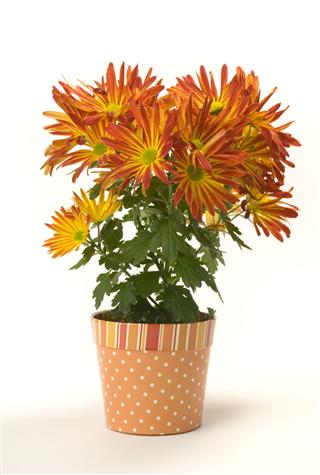
We all know a little bit when it comes to flowering vs. non-flowering plants. Flowering plants reproduce with the help of male and female parts enclosed within the petals, while non-flowering plants do not have flowers at all. Read on to know more.
Plants represent one of the dominant life forms and so learning about plants is a fascinating topic for all of us. The diversity of these autotrophic organisms is so huge that it is almost impossible to study each and every type. For simplicity in understanding, plants are further classified into different groups depending upon size, habitat, vascular bundles, flowers, spores, seeds, seed coat and many such characters. Let’s focus on the flower attributes, and take a look at flowering plants vs. non-flowering plants.
What are Flowering Plants?
The plants that bear flowers after attaining maturity are collectively grouped under angiosperms (having seeds with a protective coat). The angiosperms are further divided into monocots and dicots based on number of cotyledons present in the seeds. In the evolutionary process, the main purposes of developing flowers are, giving protection to the male and female reproductive parts and inviting the pollinating agents (birds, insects) for assisting in fertilization. Thus, the exclusive function of flowers in a plant is reproduction.
What are Non-flowering Plants?
As the term signifies, non-flowering plants are unable to produce blooms, even after they reach maturity. However, the absence of flower doesn’t mean that they cannot continue their generation. These non-flowering plants produce other reproductive structures, like strobili and spores. Also, there are simpler non-flowering plant forms that reproduce vegetatively. All bryophytes (simple, nonvascular plants), pteridophytes (plants that produce spores) and gymnosperms (having seeds without protective coat) are non-flowering plants.
Difference between Flowering and Non-flowering Plants
At the first glance, you can easily identify matured flowering and non-flowering plants. The former produces blooms of various colors, shapes and sizes during a specific time of the year, whereas these attractive flowers are missing in the non-flowering plants. Oftentimes, the vegetative phase of flowering plants are misidentified as non-flowering plants. Besides this obvious fact, flowering plants differ from the non-flowering kinds in certain aspects, of which some are highlighted below.
Biodiversity
When it comes to the diversity of flowering plants and non-flowering plants, the former represents a richer biodiversity than the later type. In fact, approximately 90% of the plants identified today develop flowers for reproduction purpose. You might be already aware about common flowering plants in and around your environment, such as grasses, water lilies, orchids, palms, etc. In comparison to this, the biodiversity of non-flowering plants is less. Examples include moss, ferns, cycads, pine, fir, spruce, etc.
Evolution
Both groups of plants are believed to have descended from a common ancestor. The reason being the presence of photosynthetic pigments for food synthesis. So, which types of plants evolved first, the flowering or the non-flowering plants? Well, the land plants evolved approximately 475 million years ago. Plants that produced flowers for reproduction originated after the evolution of non-flowering plants somewhere in the Lower Cretaceous period about 130 million years ago.
Vascular System
All flowering plants have a well-developed vascular system, meaning they bear xylem and phloem for absorption of nutrition and water. The collected water is distributed to all parts of the plant. On the other hand, some of the non-flowering plants are devoid of this internal system for absorbing water and supplying it to other parts. Such plants are small in size and grow in aquatic or moist areas (e.g. mosses). To cut it short, the flowering plants are more adaptable than the non-flowering types.
Mode of Propagation
One point that truly differentiates between flowering and non-flowering plants is their reproduction. Yes, flowers are necessary for reproduction in flowering plants, while it is not so in the case of non-flowering plants. The plants that lack flowers reproduce via production of cones and spores. However, both plant groups are capable of propagating by means of vegetative plant parts (root, stem, leaves). Such a case of producing new plants without fertilization is known as asexual propagation.
Reproduction Process
As aforementioned, bright-colored flowers help in attracting insects and birds for pollination process. So, many of the flowering plants (onion, mustard, okra, cashew, coconut) rely on other living organisms for pollination. On the other hand, a few non-flowering plants need help from other organisms for reproduction. Such plants bear beautiful cones to invite insects. Except for these, most of the non-flowering plants propagate on their own and produce genetically similar plants. Learn more on angiosperms and gymnosperms.
These were some of the basic differences between flowering and non-flowering plants. It is an acceptable fact that flowers are the most desirable parts of plants. They are prized for their color, beauty and elegance in any garden layout. Nonetheless, non-flowering plants have their own advantages, and they do enhance the aesthetic value of a landscape design in a unique way. Hence, many hobbyists prefer to include both flowering and non-flowering plant cultivars in the landscape.






















